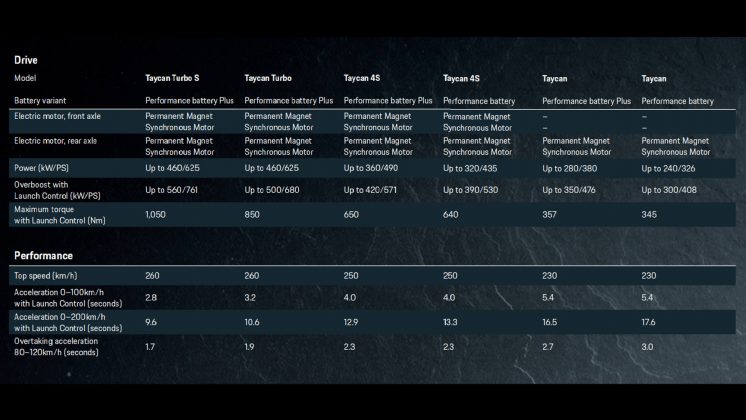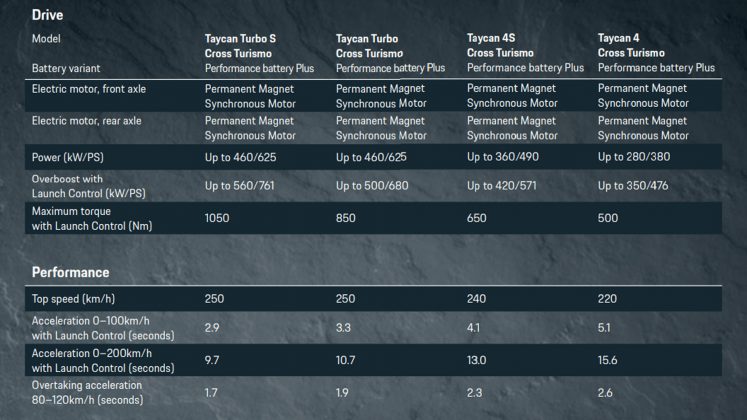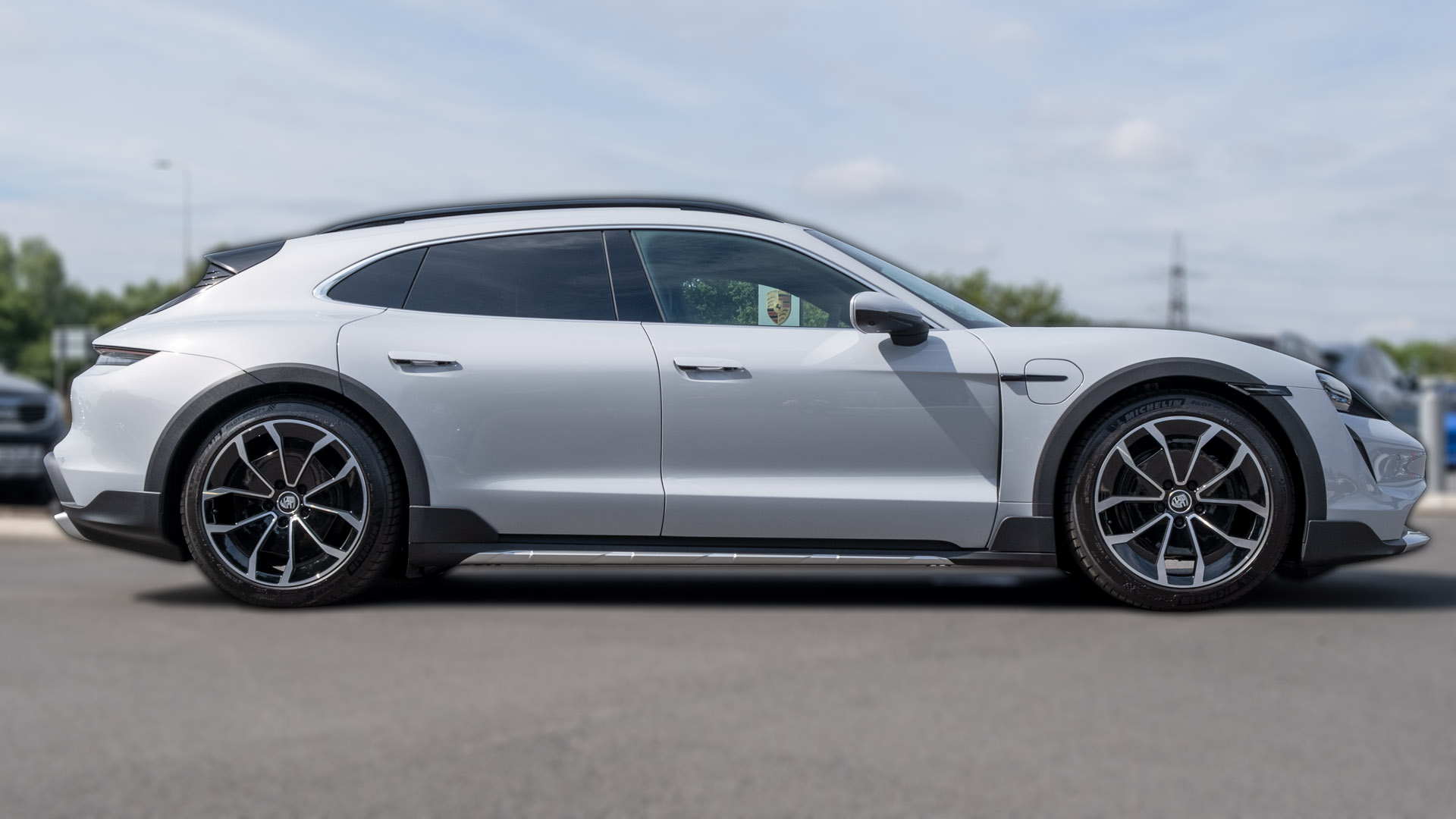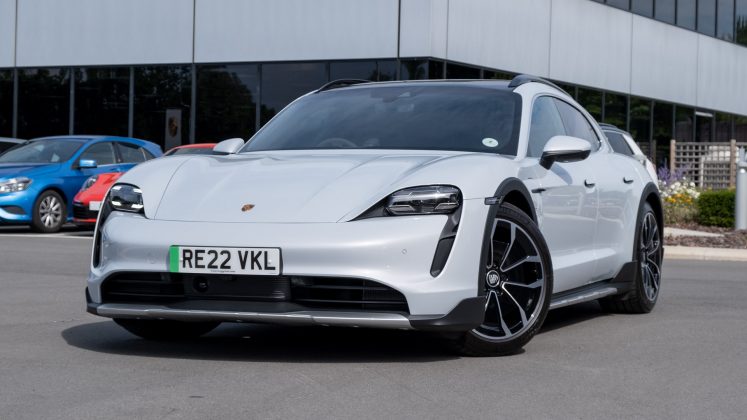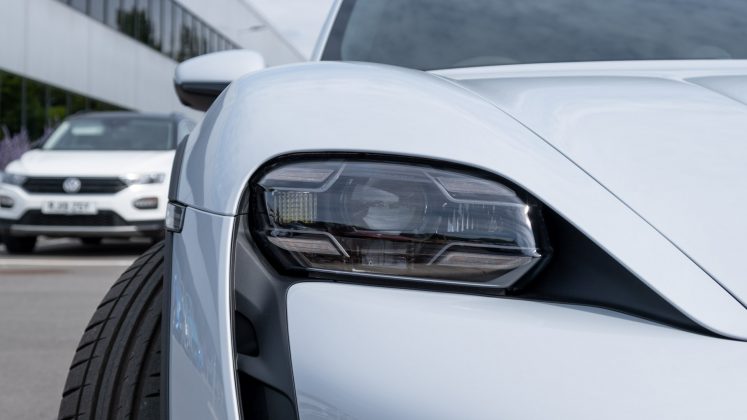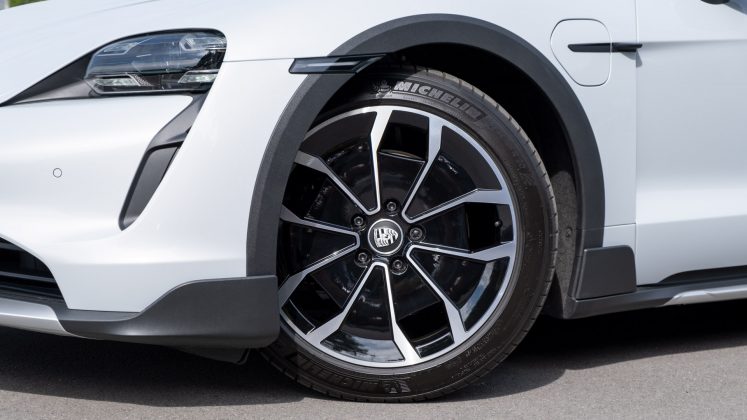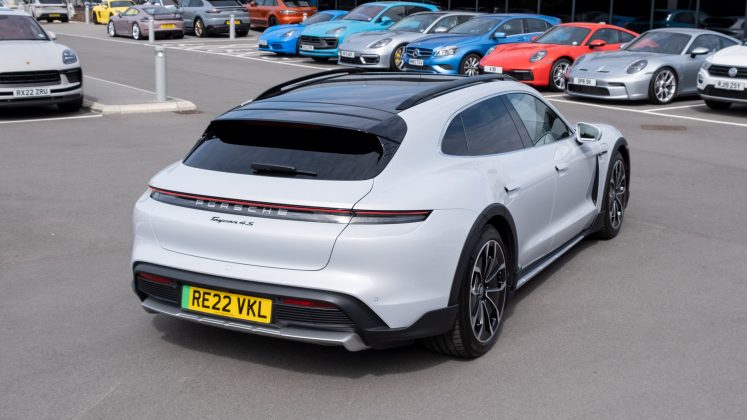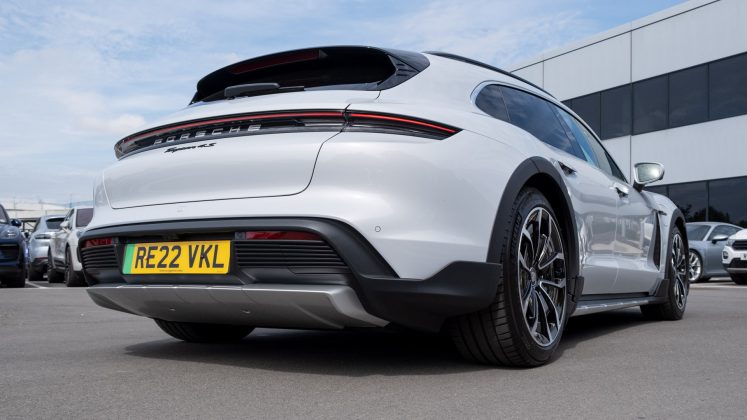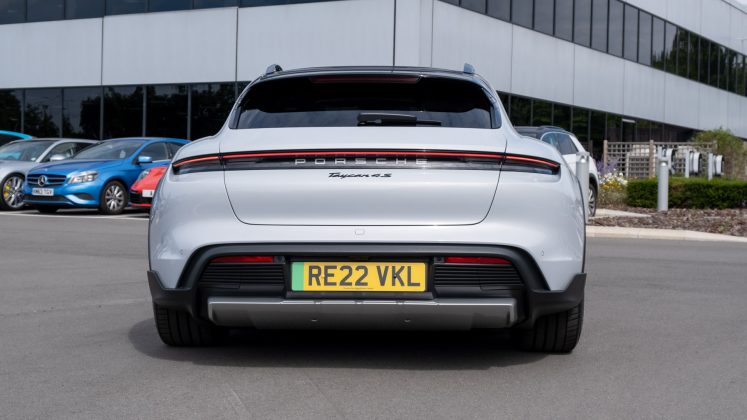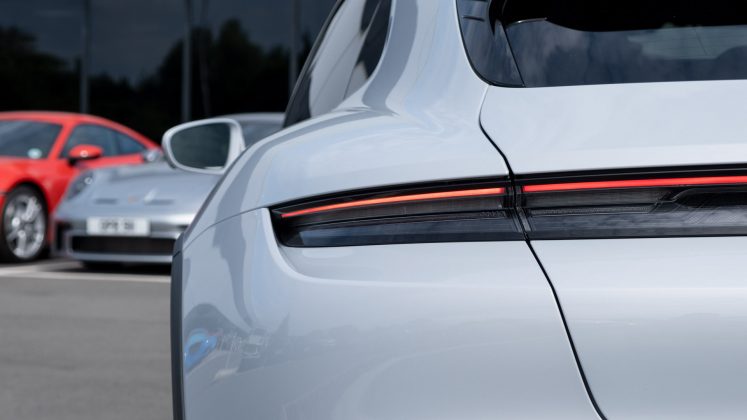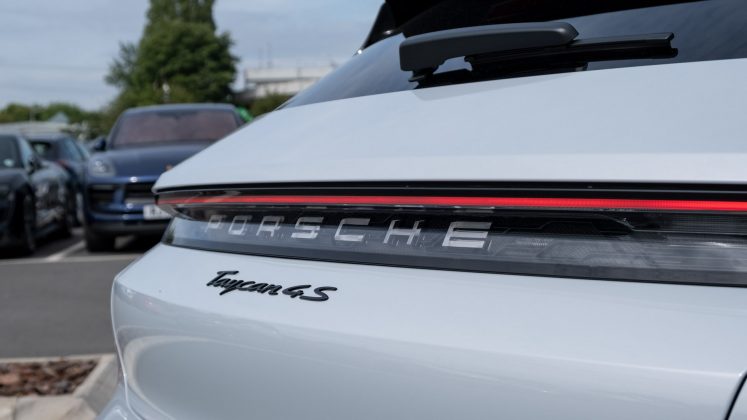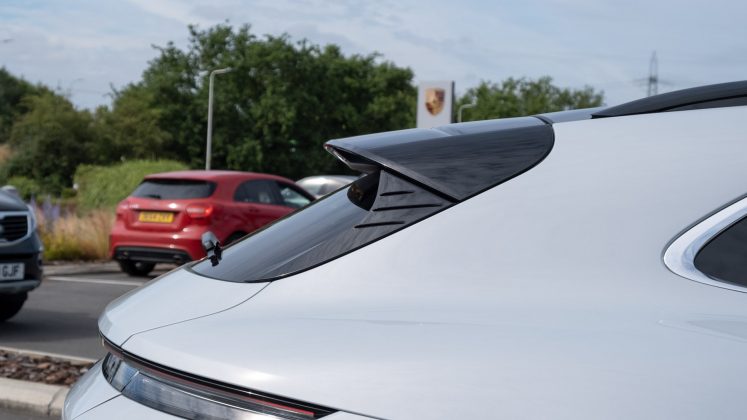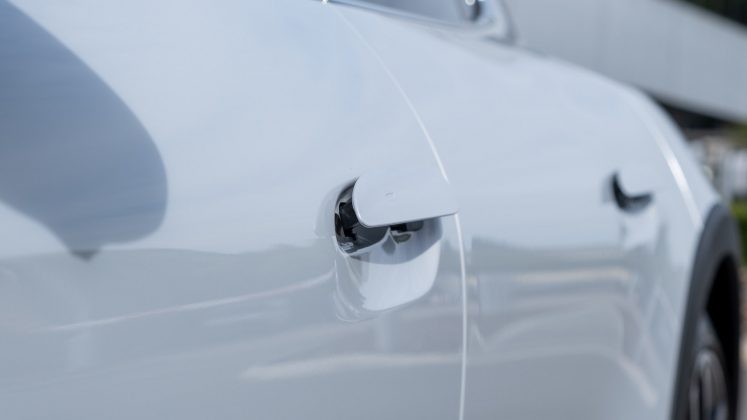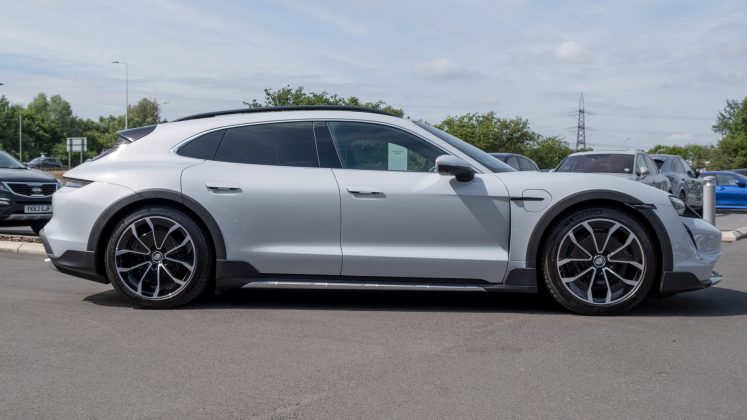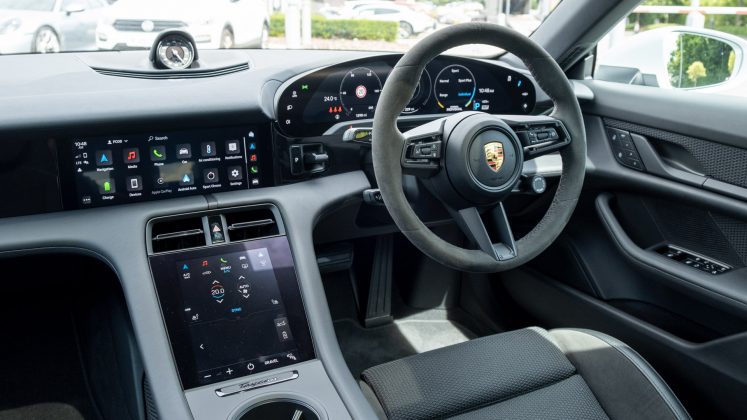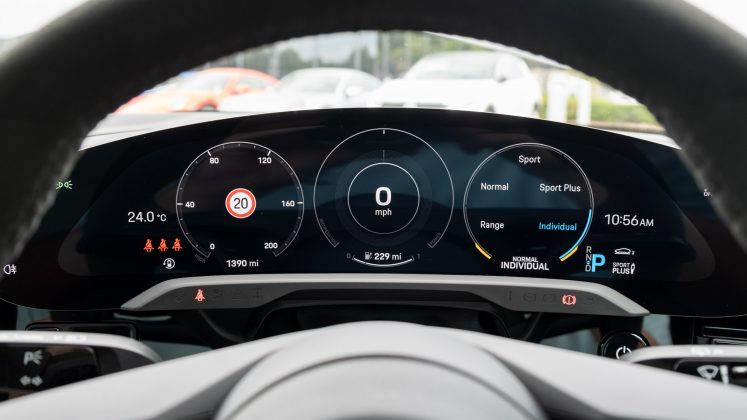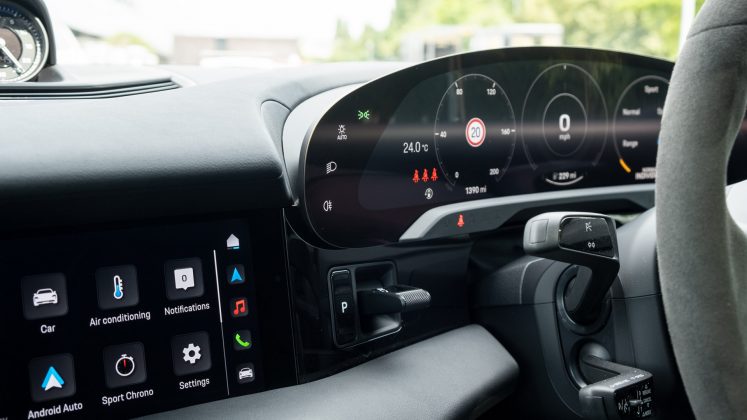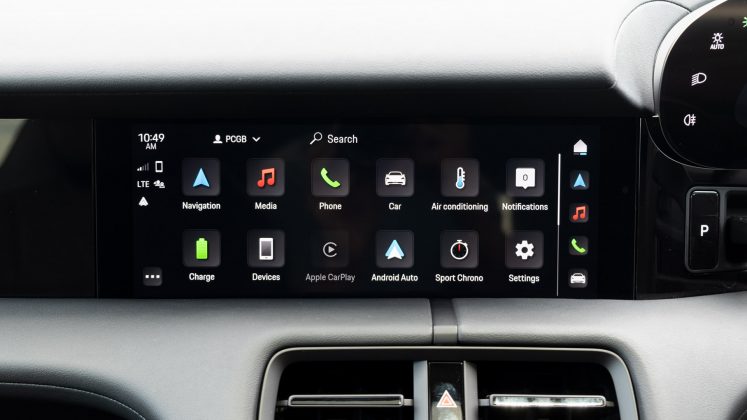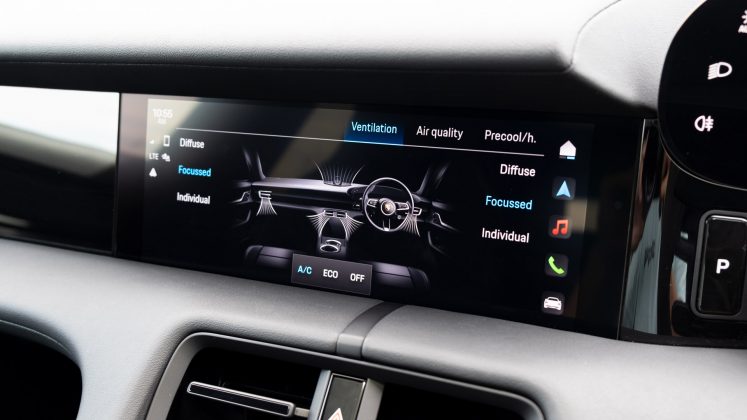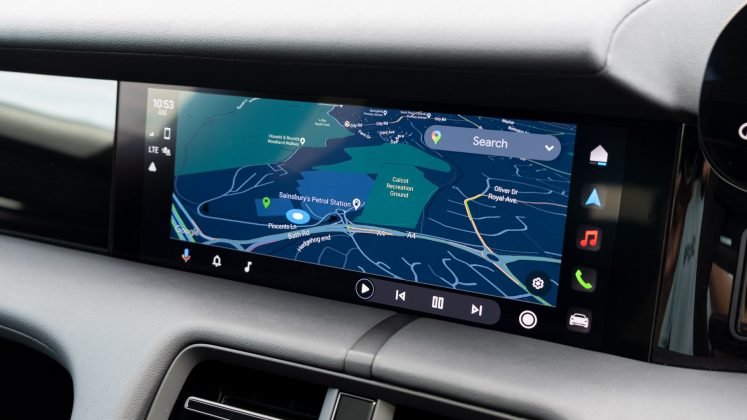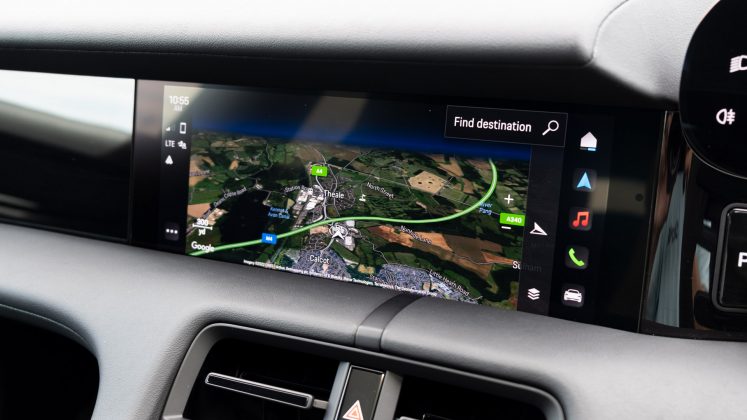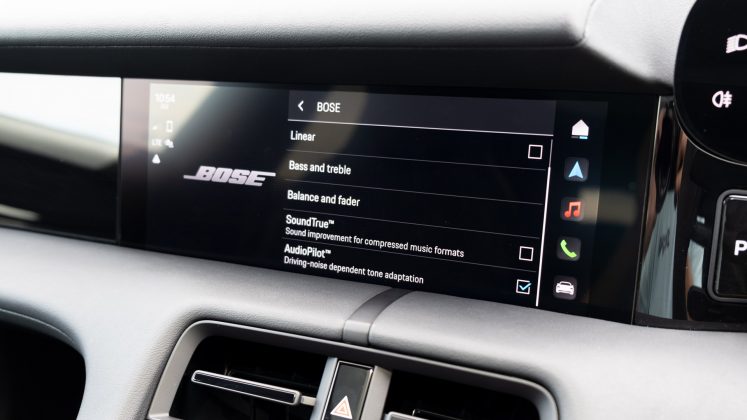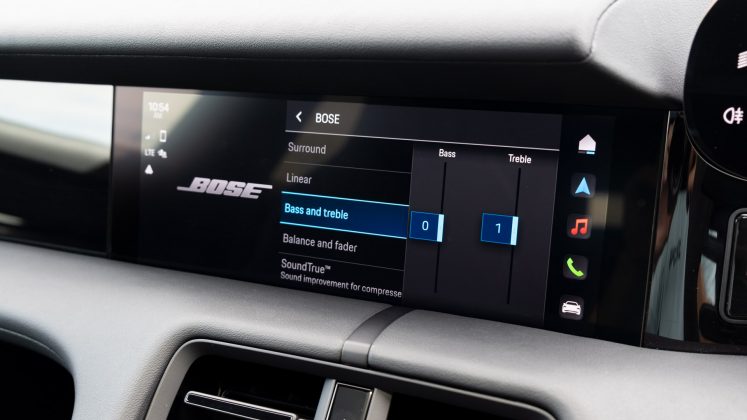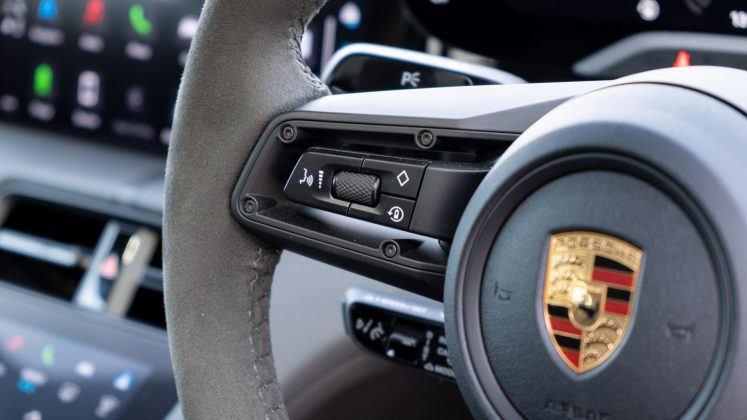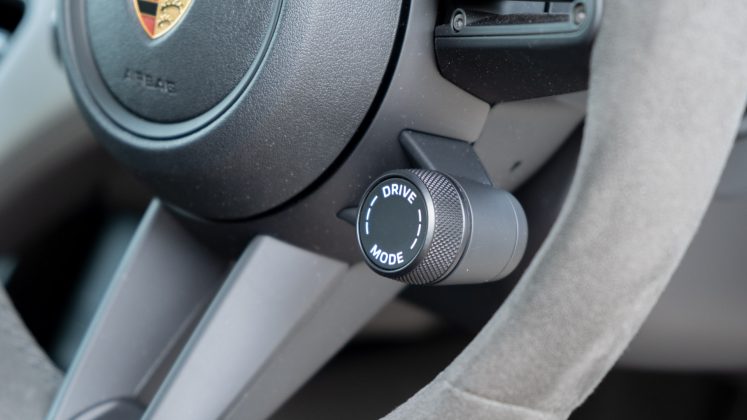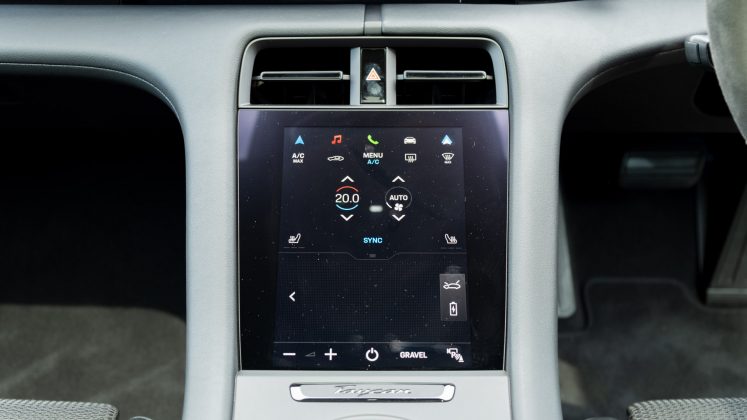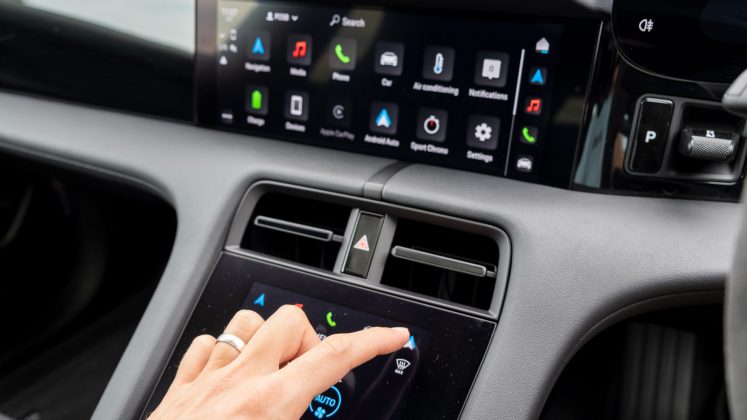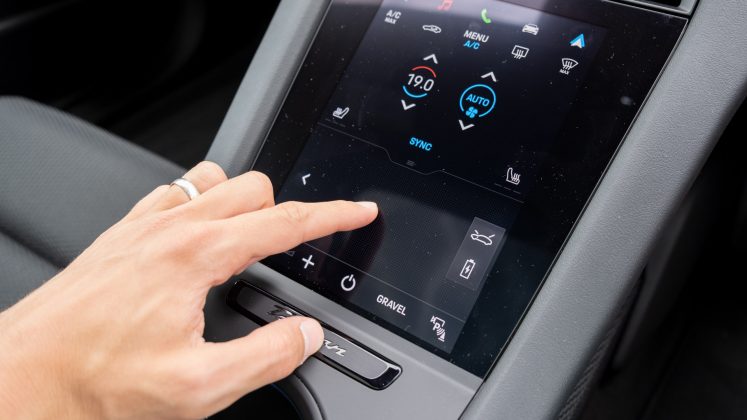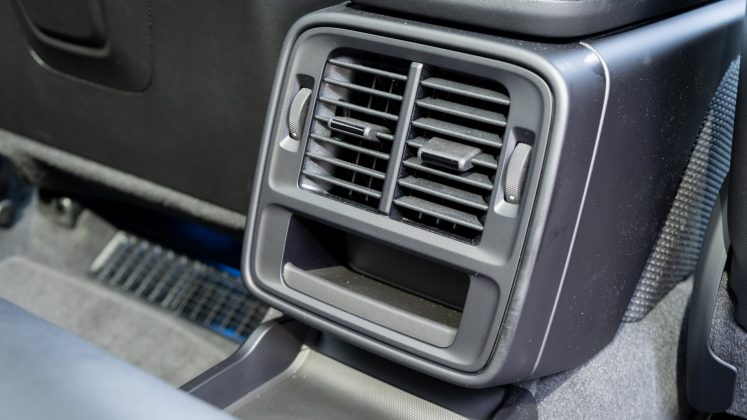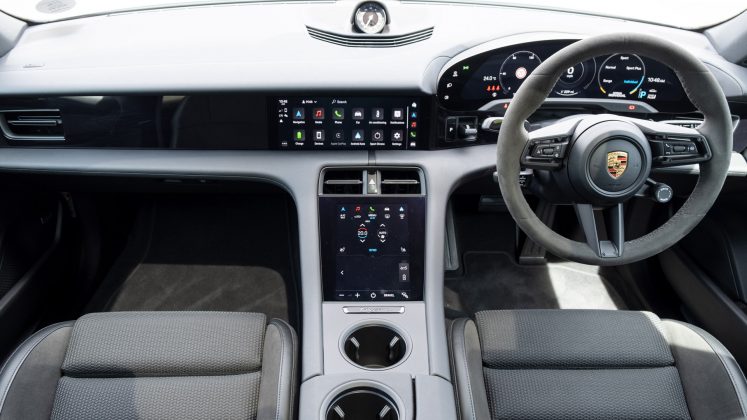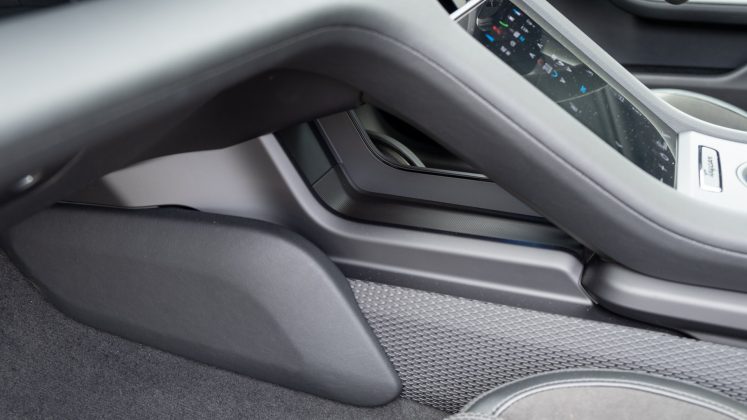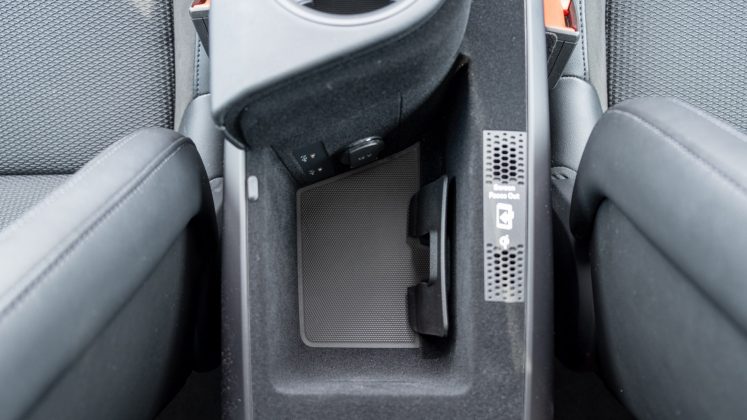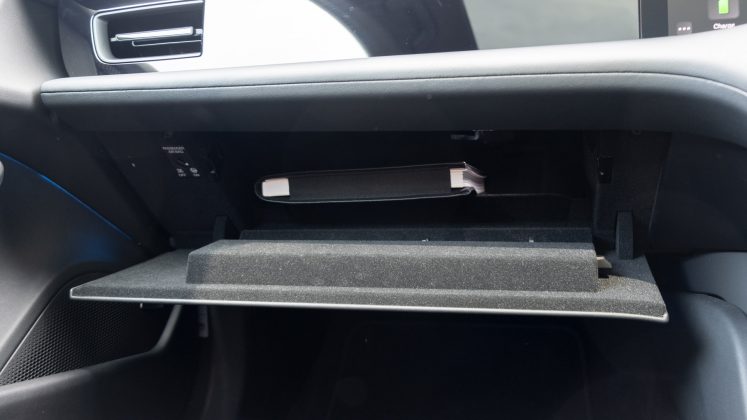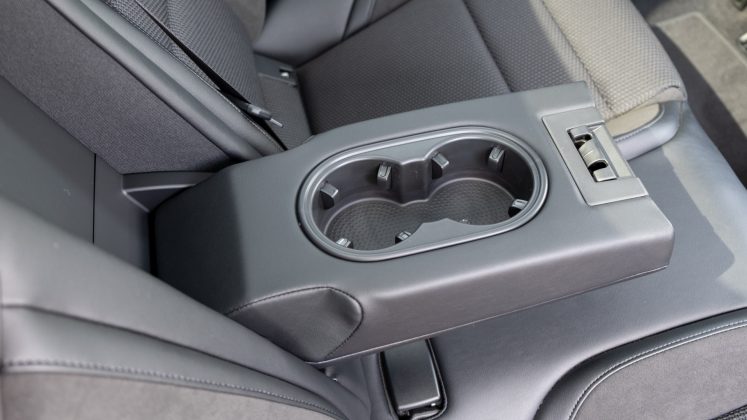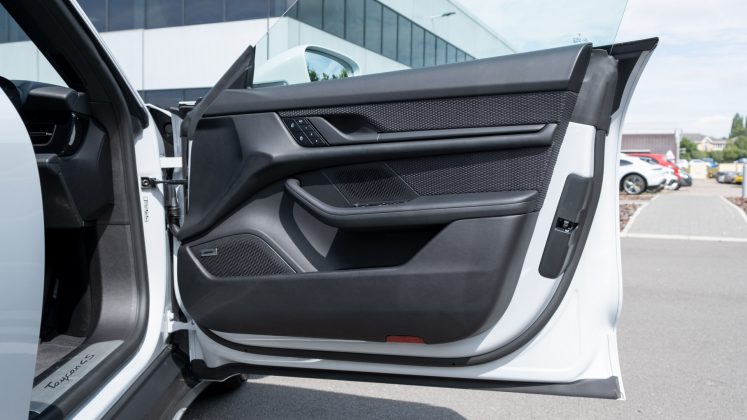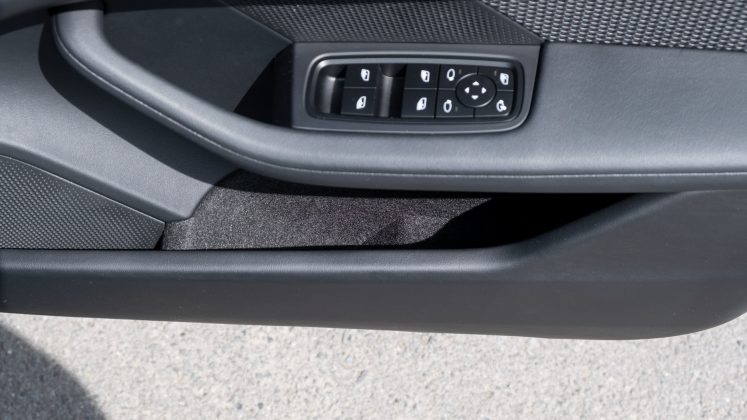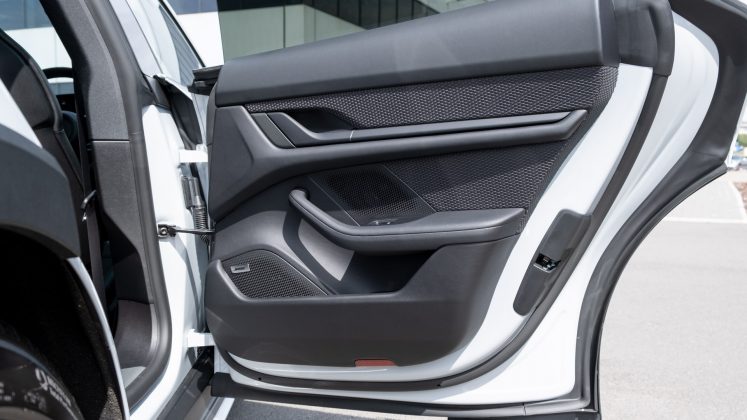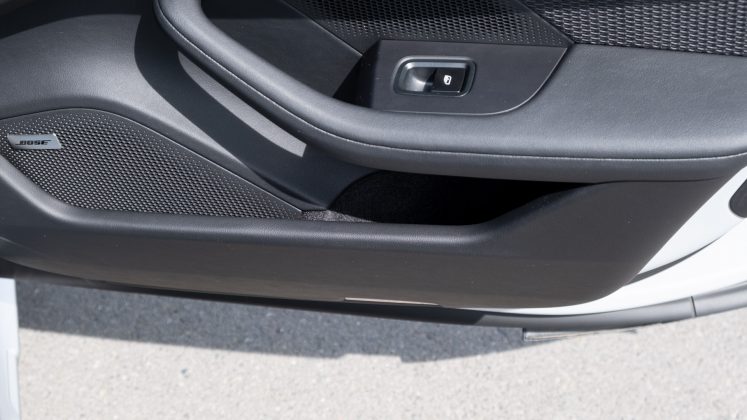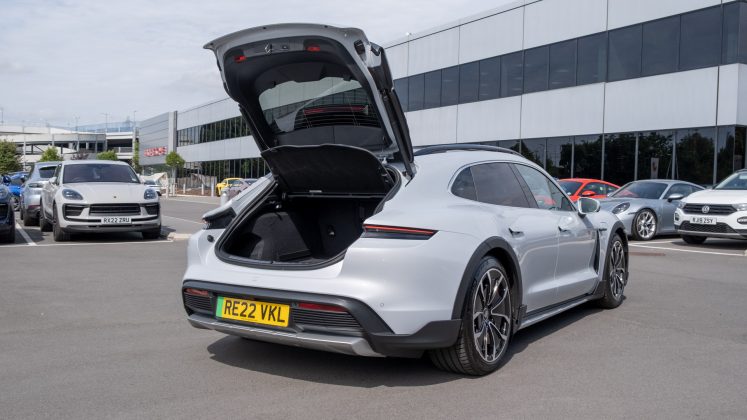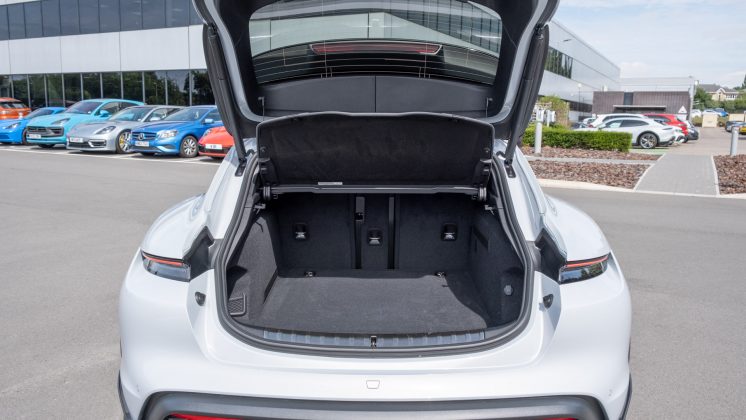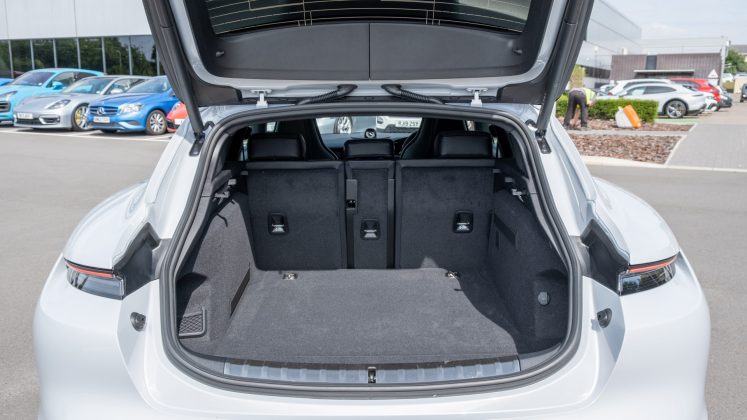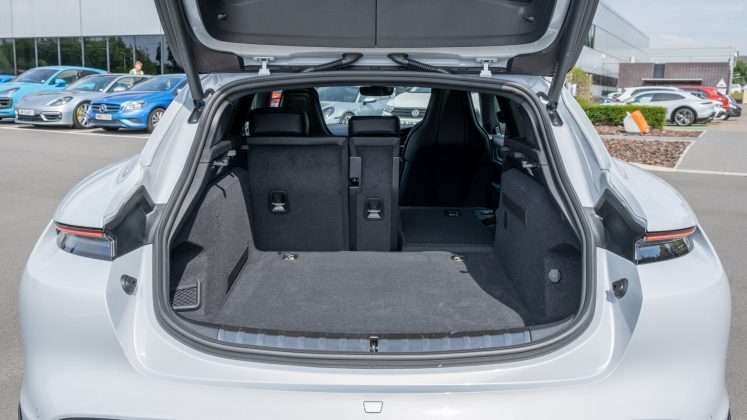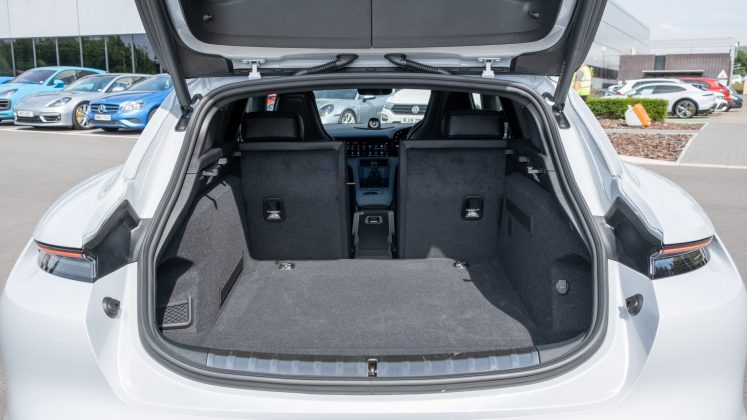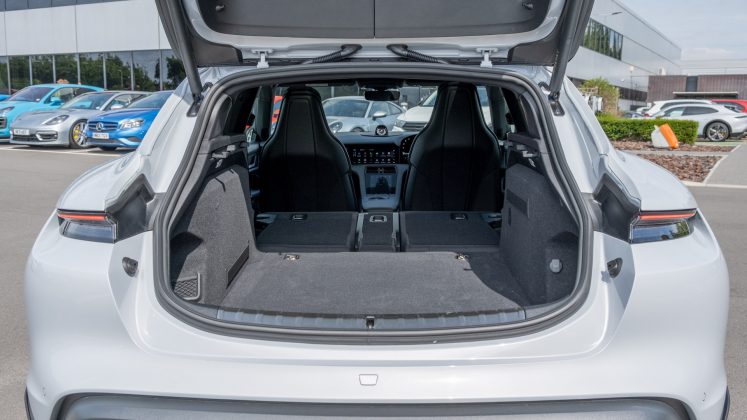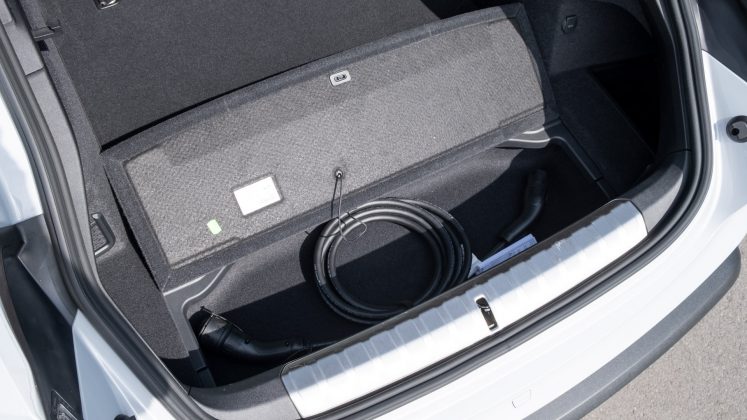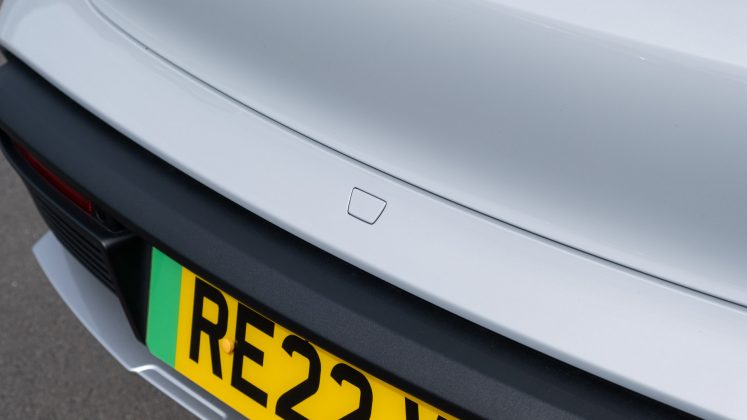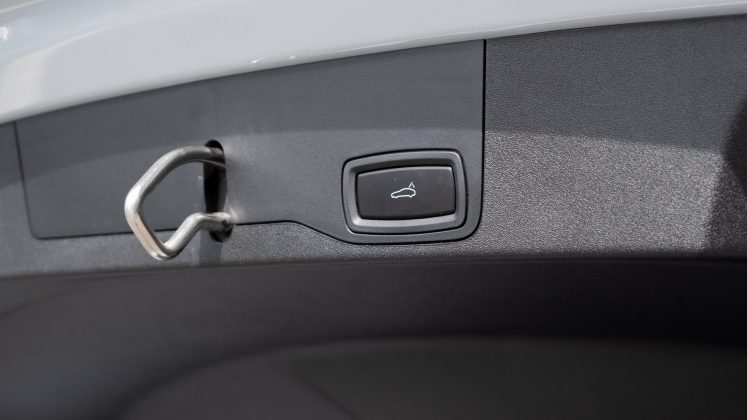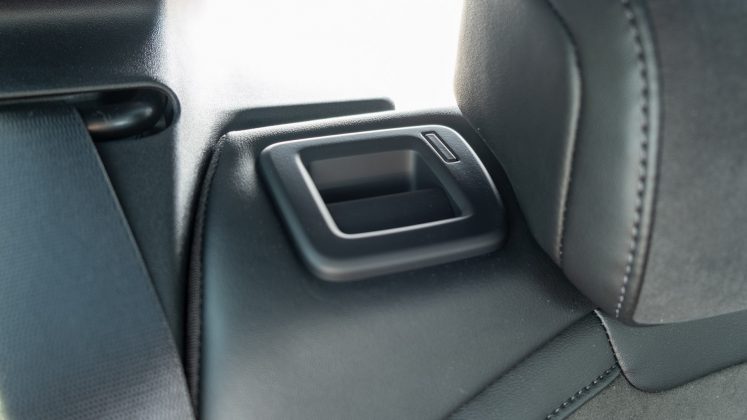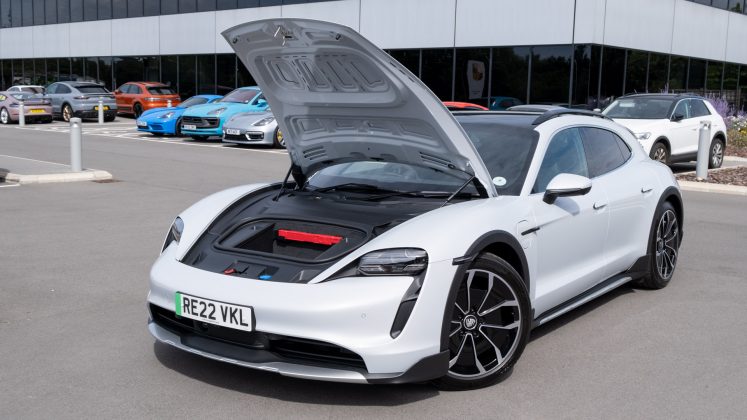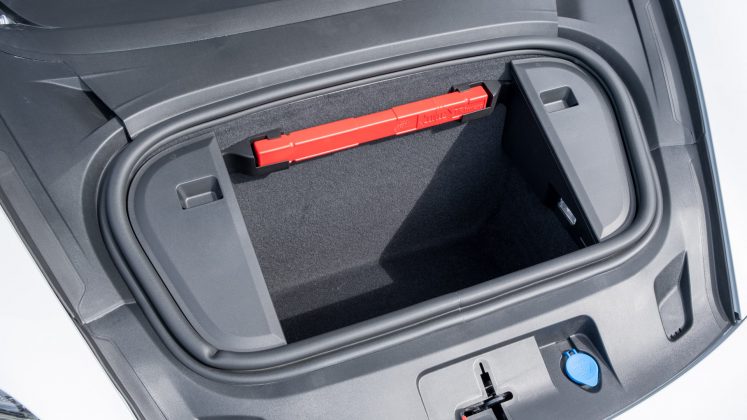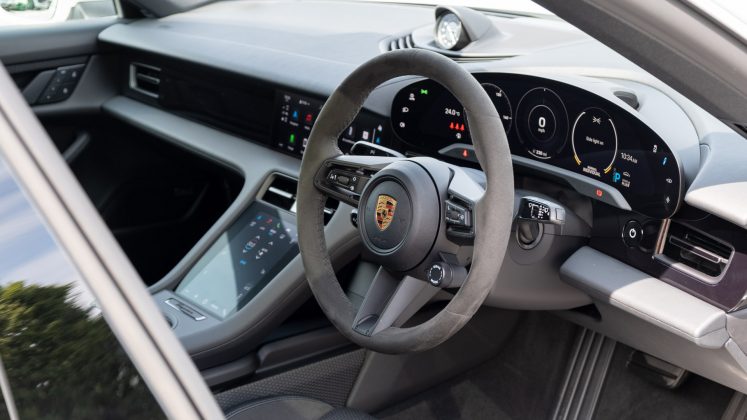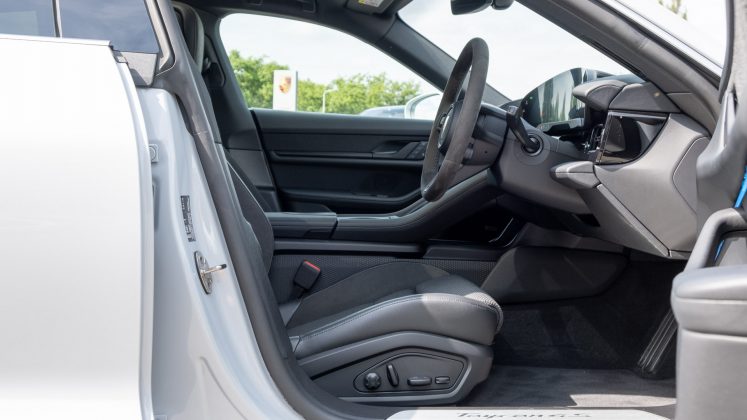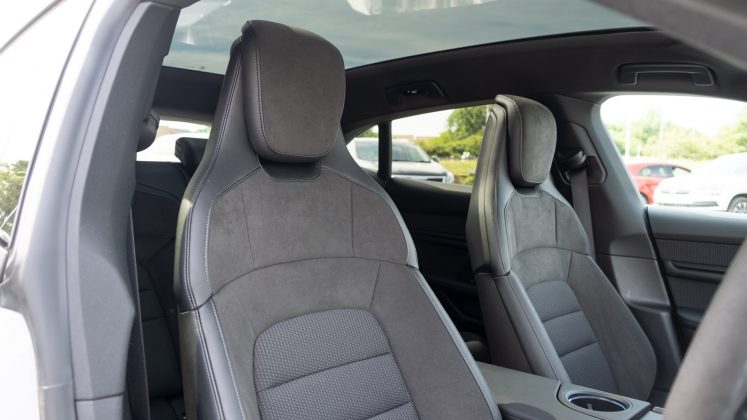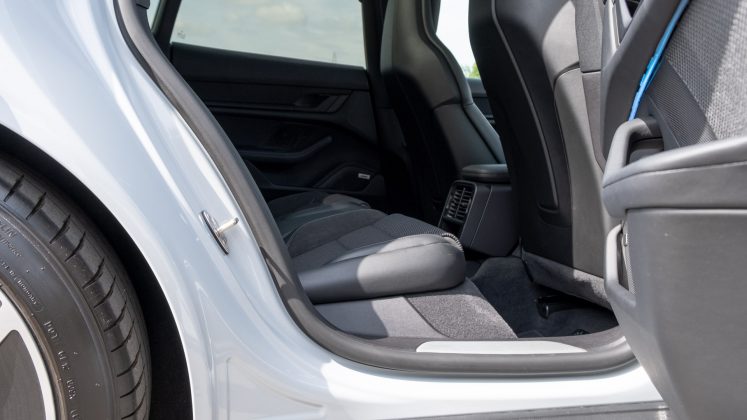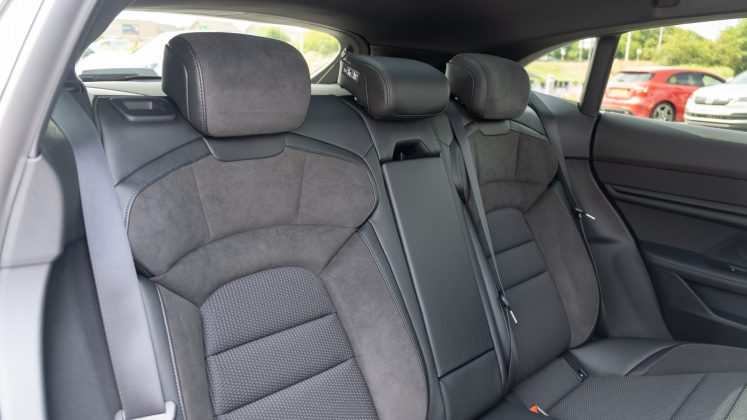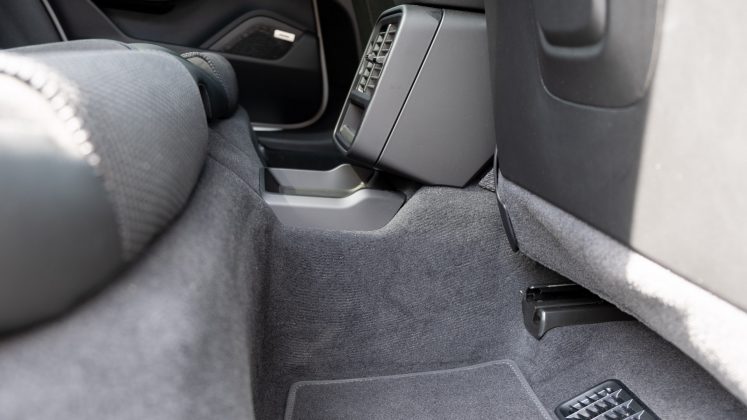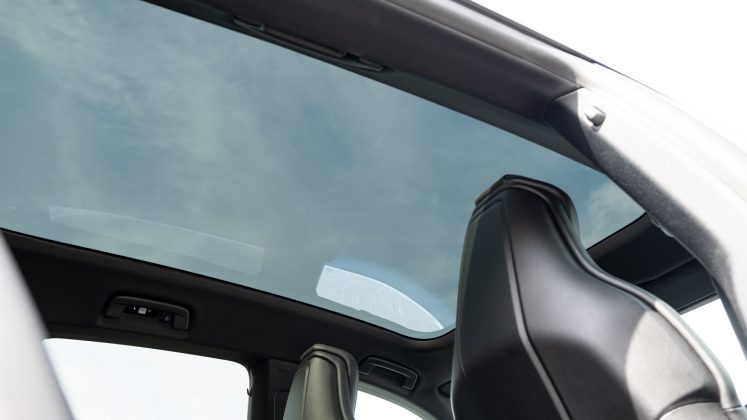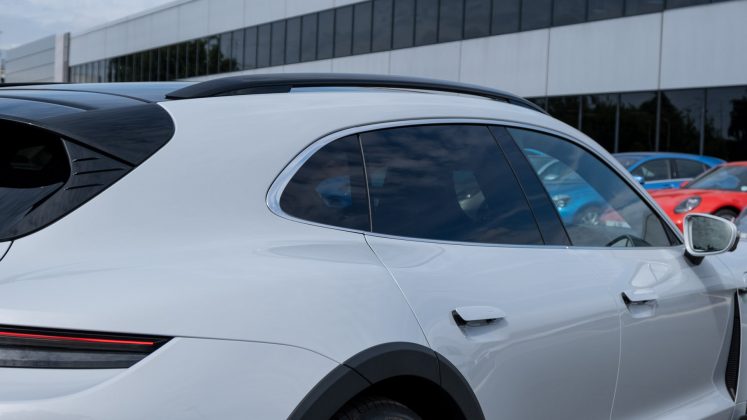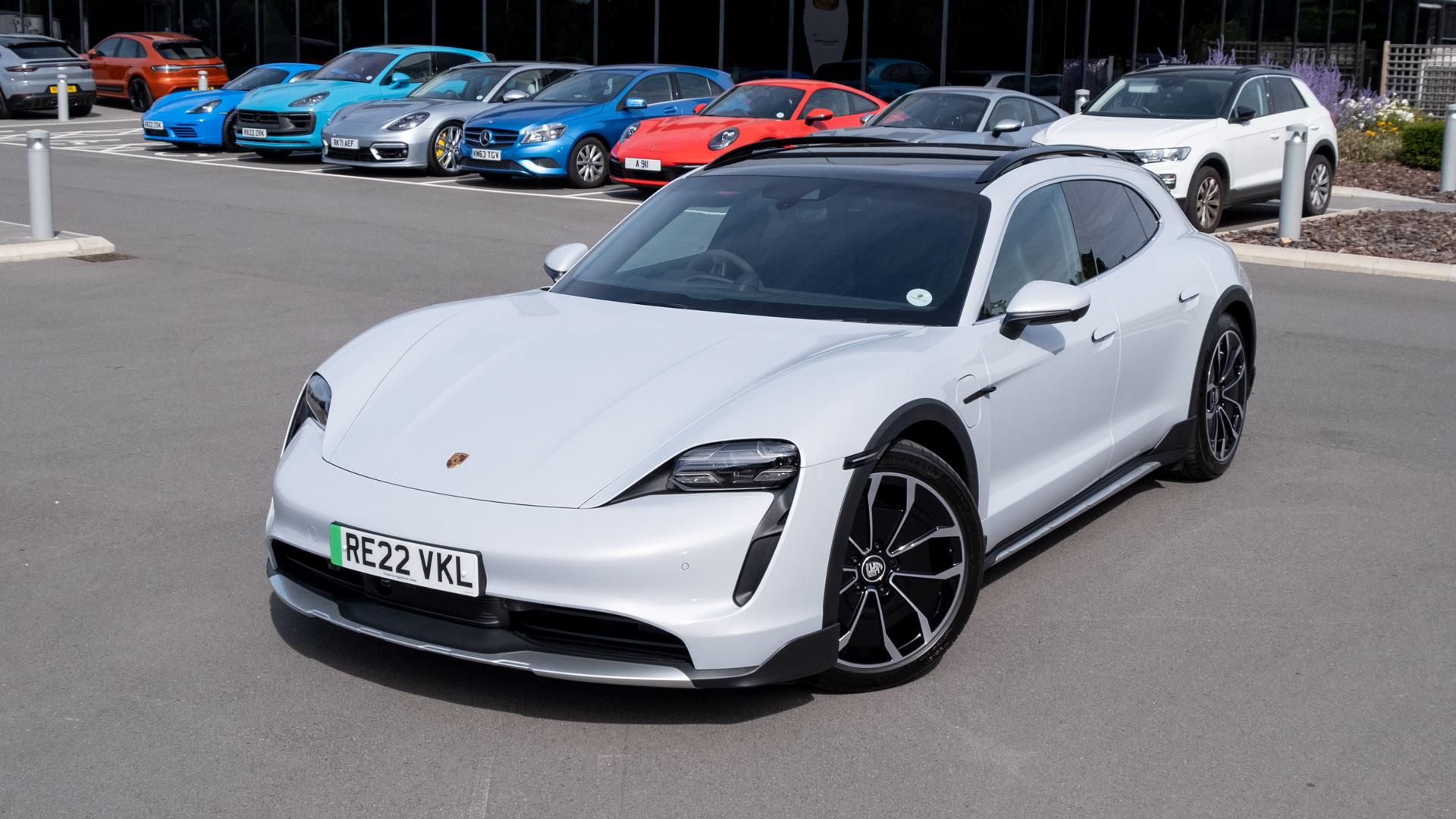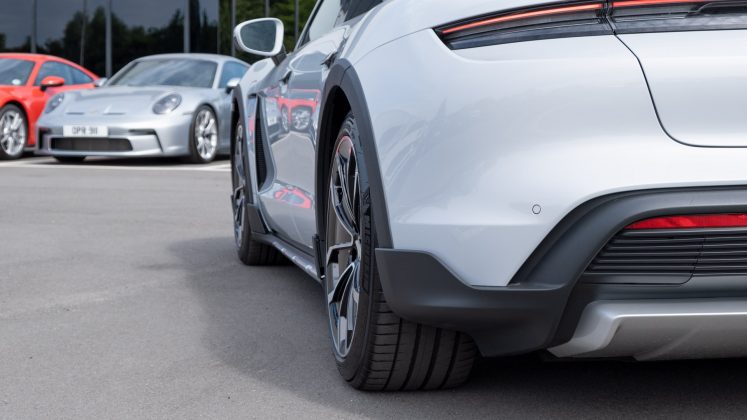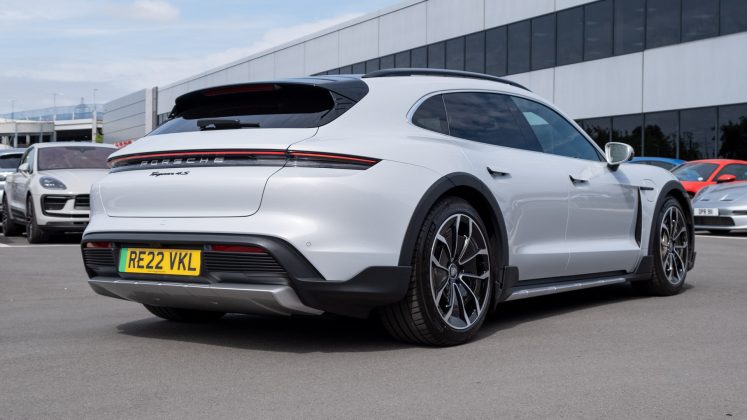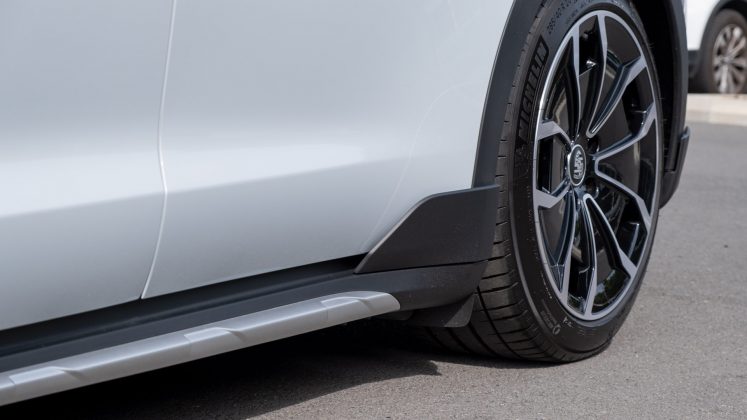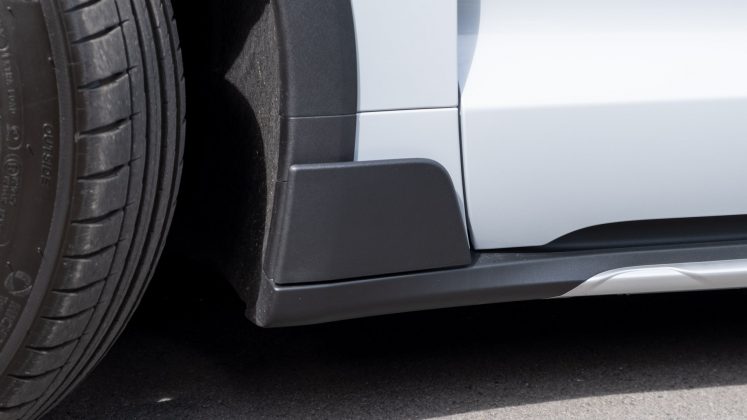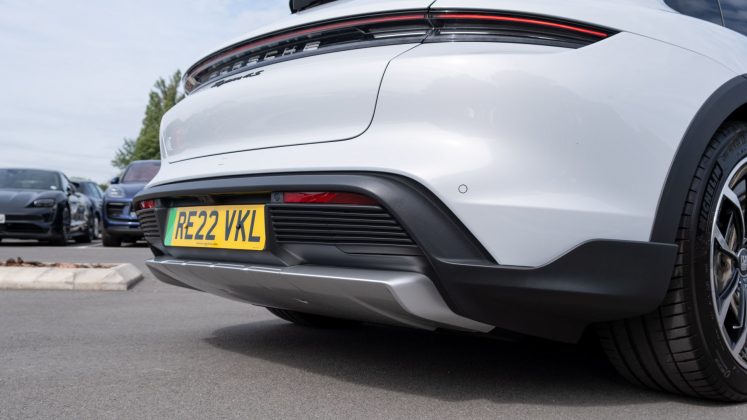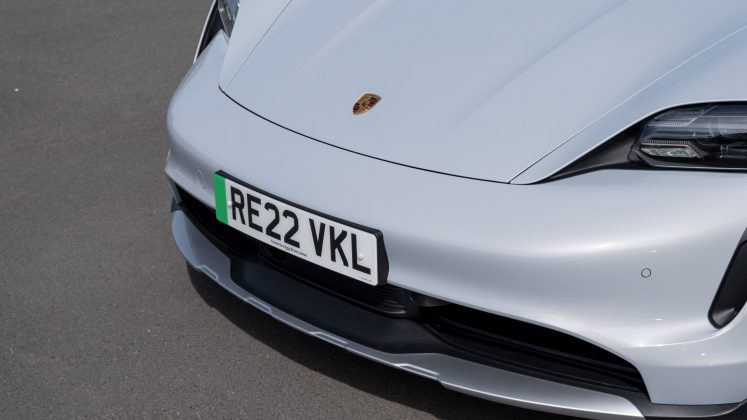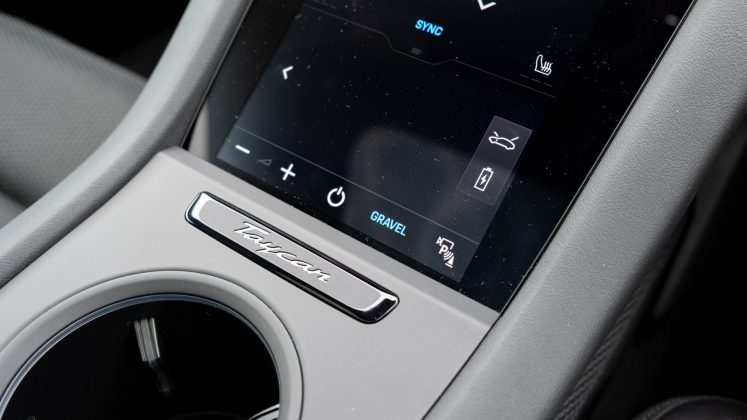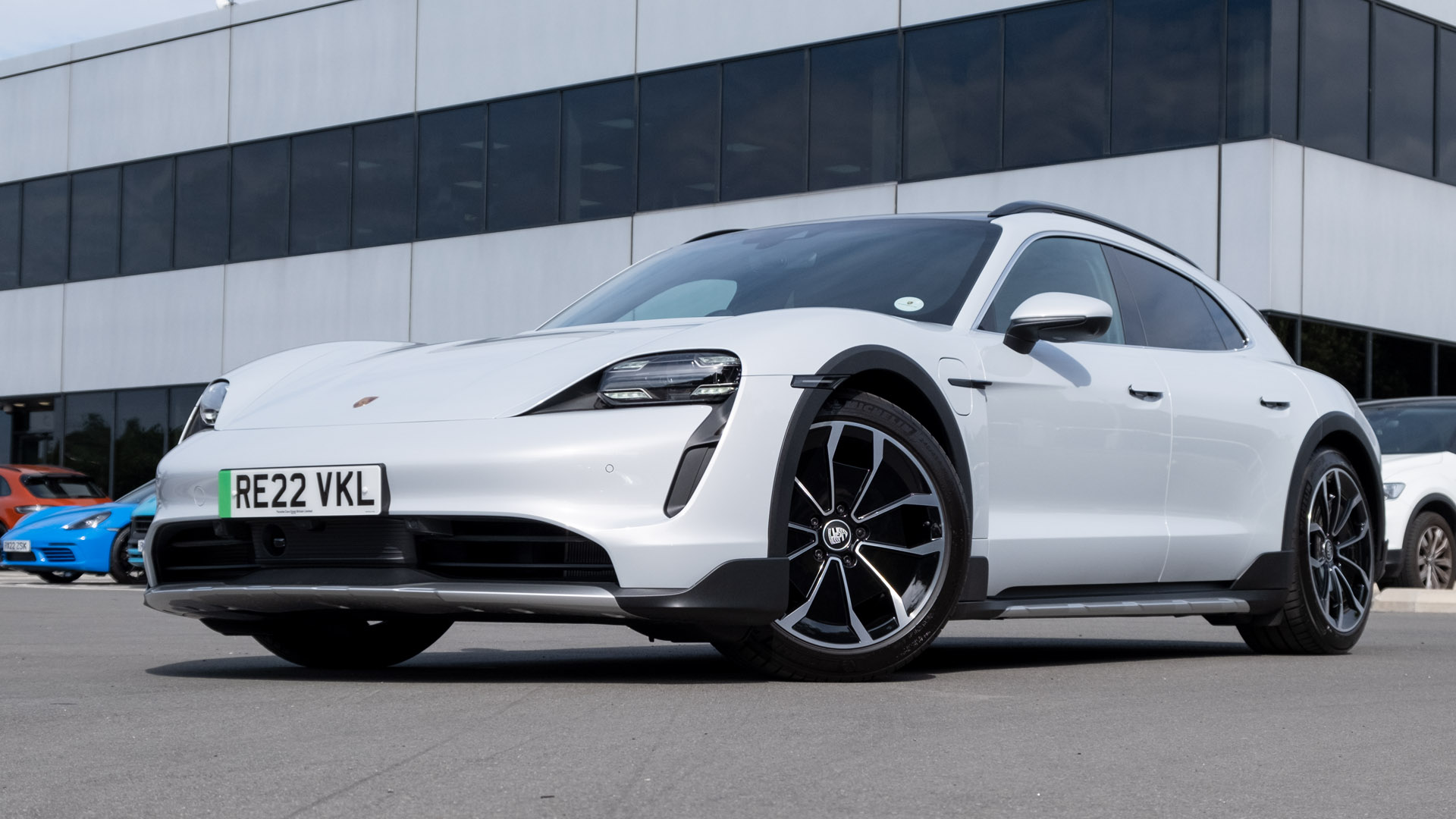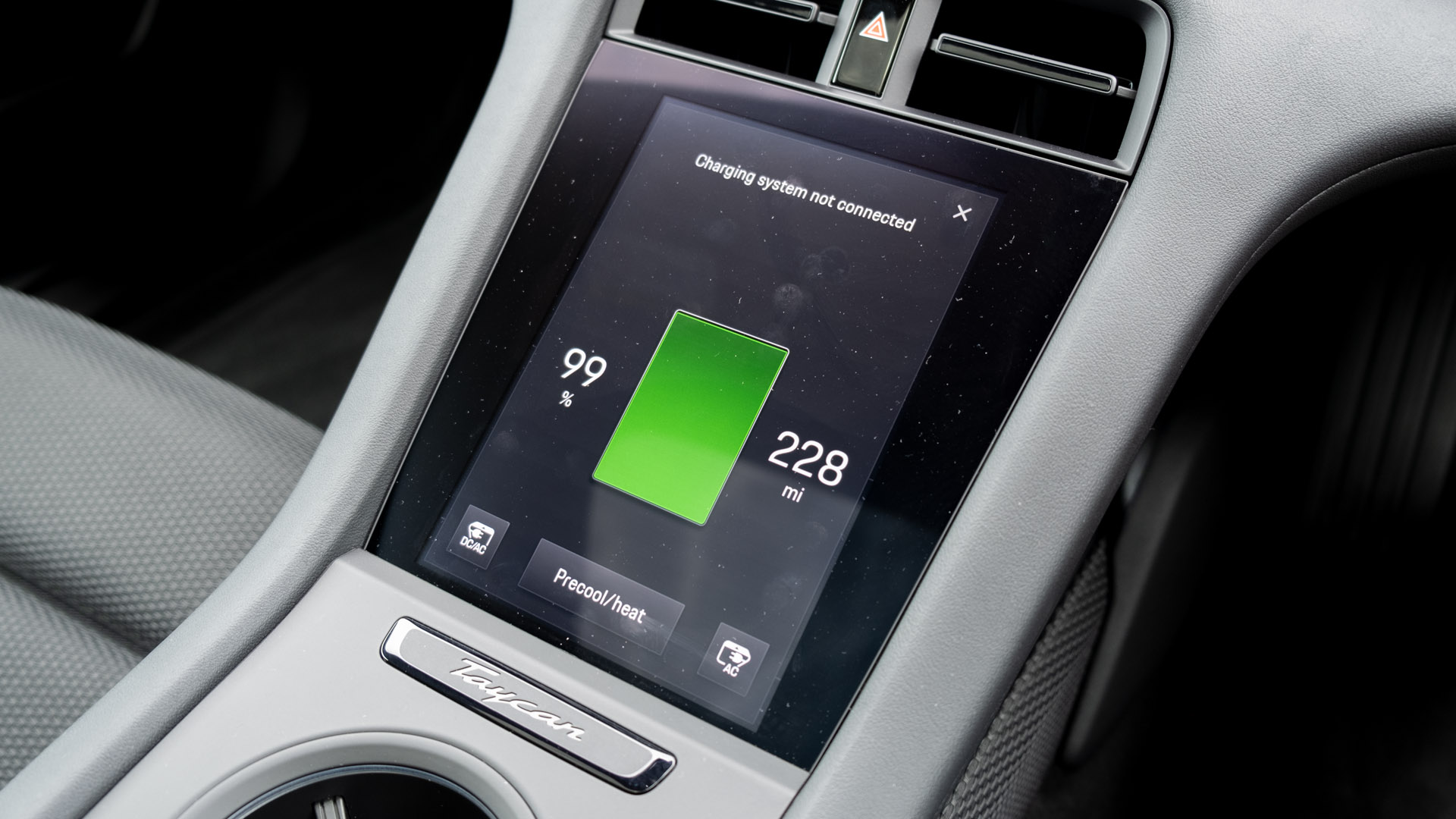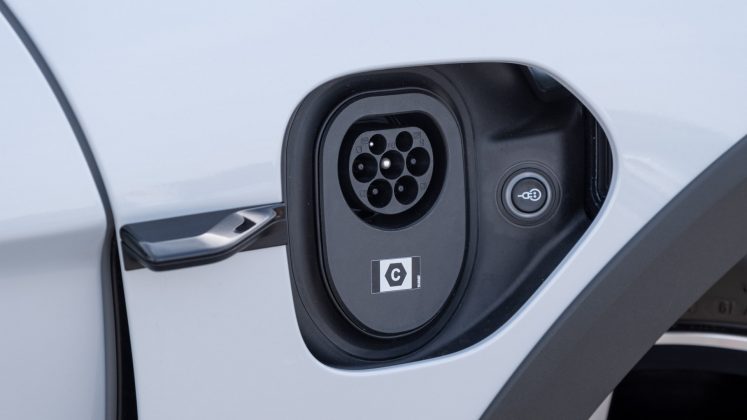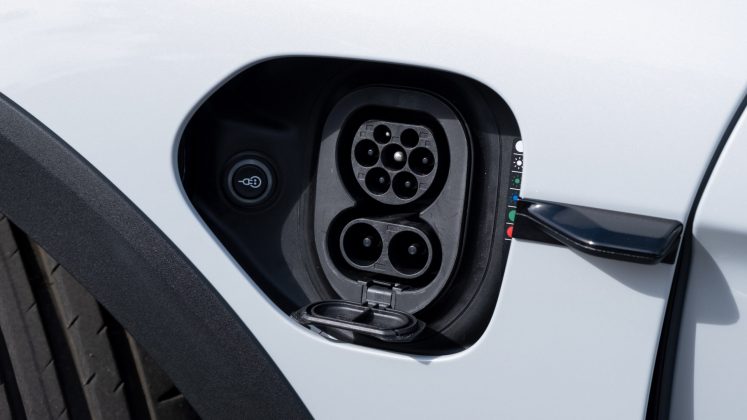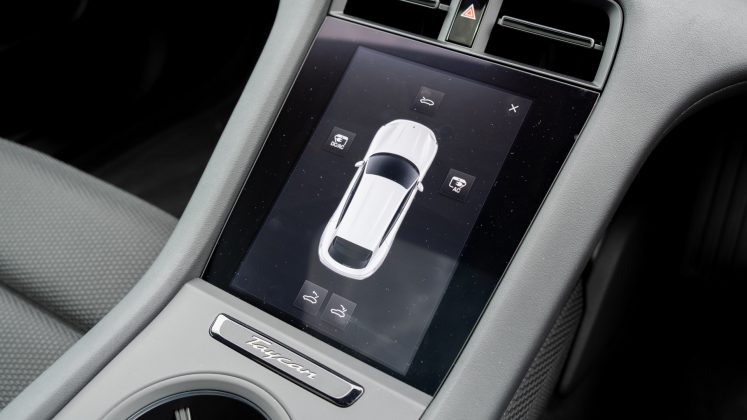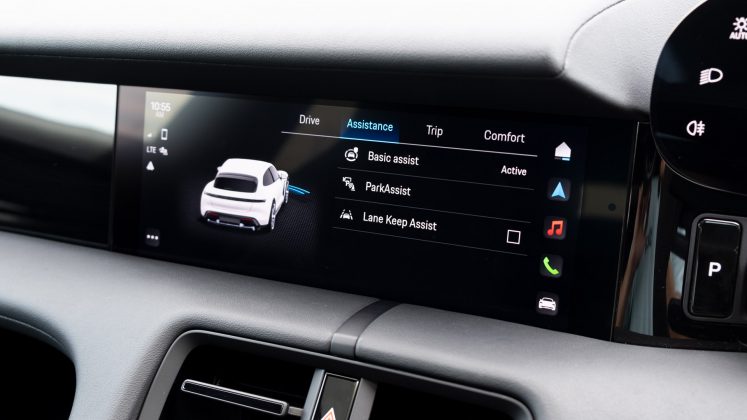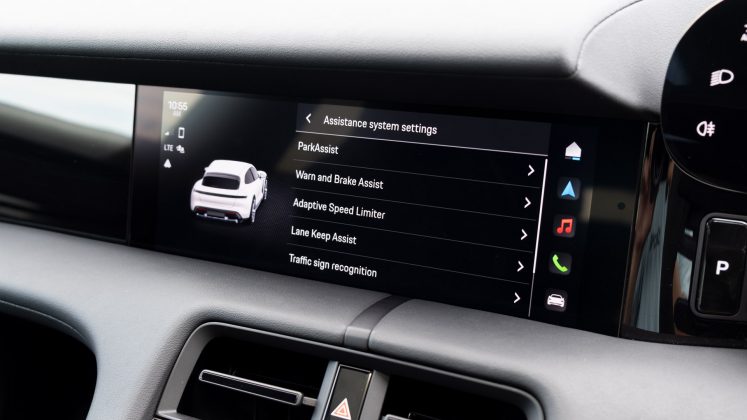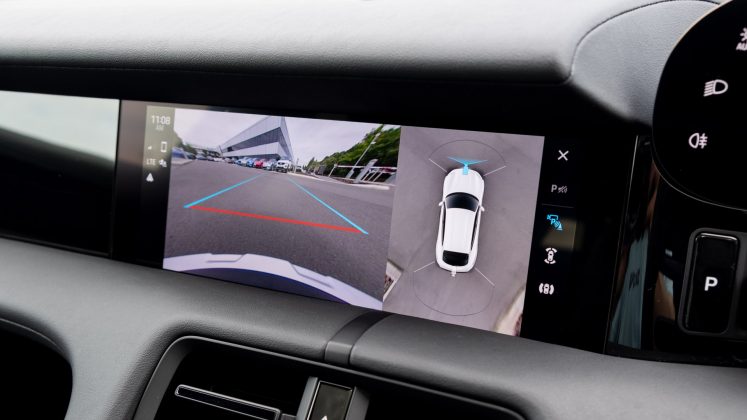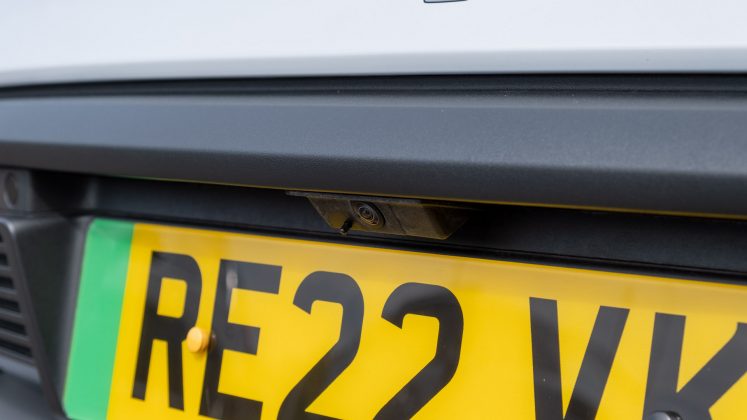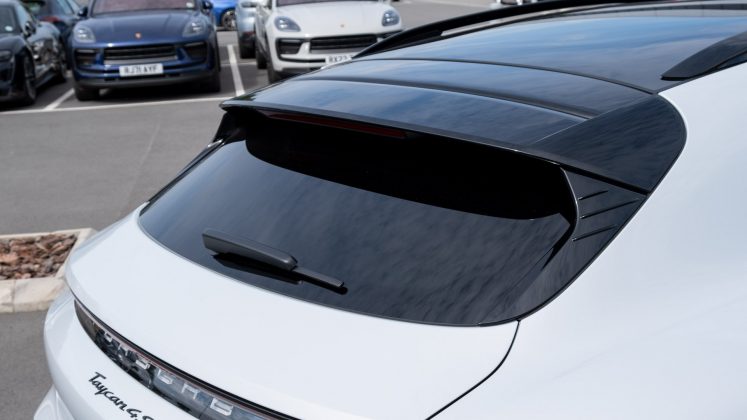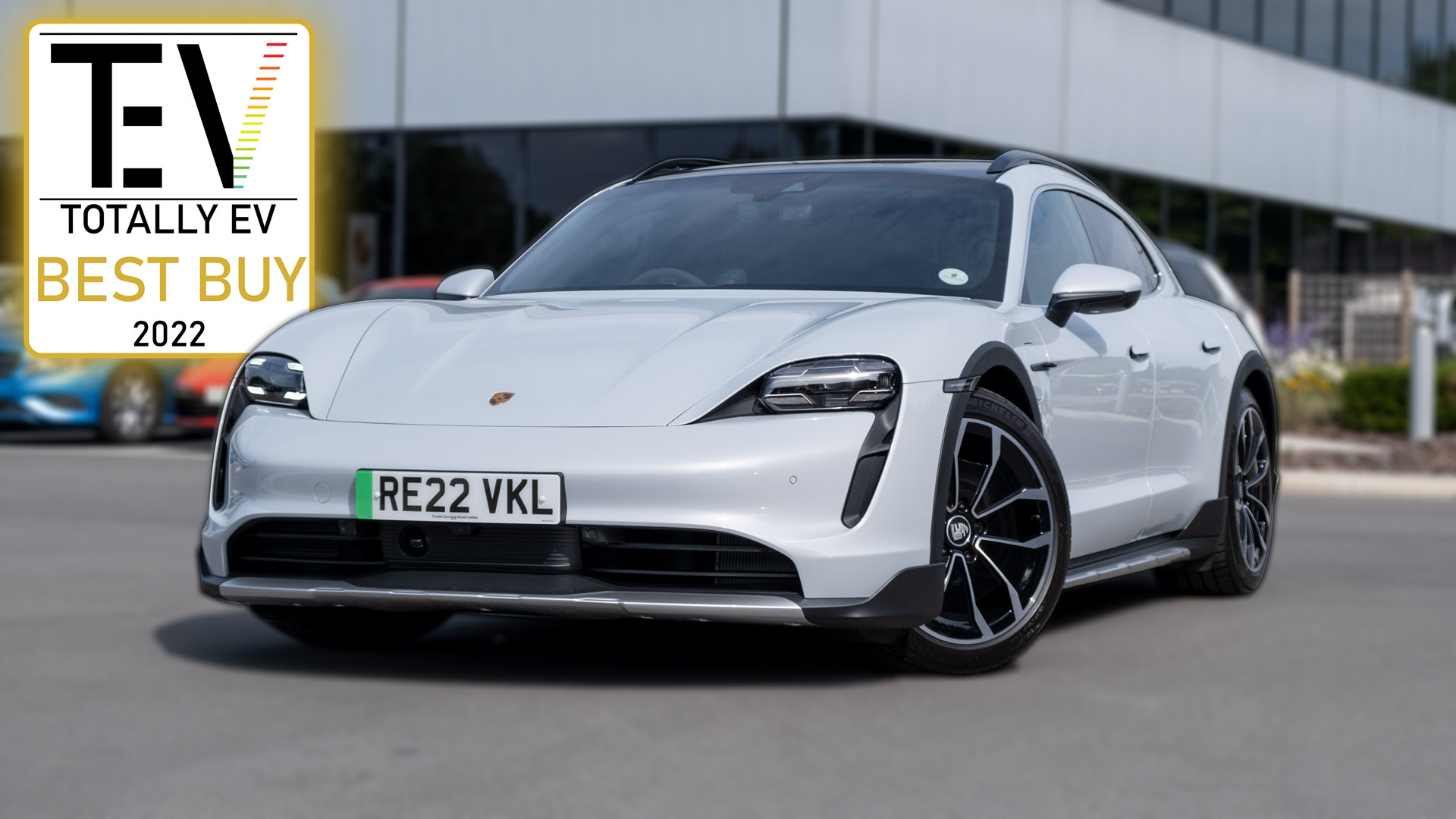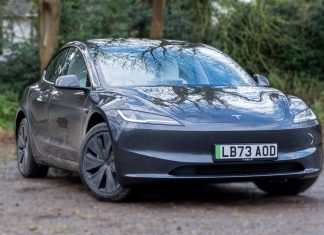The Porsche Taycan is undoubtedly the electric vehicle for those who want the utmost driver’s feel. However, it’s not the most practical EV with its limited boot capacity and rear occupancy space. Step forward the Cross Turismo, an all-electric vehicle that promises to improve functionality, while retaining the staple of Porsche’s DNA, the driving dynamics.
If you’d prefer to watch a review of the Porsche Taycan Cross Turismo, head on over to our YouTube channel.
Porsche Taycan Cross Turismo price & competition
The Cross Turismo is a little dearer than its saloon sibling. At the time of writing, prices start from £76,500 and extend up to £143,400, while the regular Taycan starts from £75,500 and goes up to £142,400. A detailed breakdown can be found below (click to expand):
Note, there’s also the Taycan Sport Turismo and the Taycan GTS Sport Turismo. The former is the entry-level model, which is available with a smaller battery pack and a singular motor on the rear axle; while the latter variant sits in-between the 4S and Turbo and has body-coloured wheel arches and side skirts as opposed to the plastic trim present on the Cross Turismo models.
Find the best Porsche Taycan Cross Turismo deals
On review is the Porsche Taycan 4S Cross Turismo which starts from £91,000 and is our preferred trim of the bunch. Our tested model had a whole host of options fitted, taking the tally up to a whopping £112,033 – a full breakdown of the configuration can be accessed via Porsche’s website (Code: PPAPHCC6).
When it comes to its competitors, its longest-standing rival is the Tesla Model S. Within the Volkswagen Group, there’s the Audi e-tron GT which starts from £84,000 and the Audi RS e-tron GT which starts from £115,000. Elsewhere, there’s the BMW i4 from £53,480, the Tesla Model 3 from £48,490 and the Polestar 2 from £43,150.
Read next: Our favourite power banks for long journeys
Porsche Taycan Cross Turismo exterior review
Much like its saloon sibling, the Cross Turismo is extremely stylish. It stands out from its competitors and retains Porsche’s unique design language. Despite its elongated frame, it still strikes us as an aesthetically pleasing electric vehicle.
Depending on the chosen trim level, you’ve got 19″-20″ rims fitted as standard with the option of selecting 21″ alloys. Pictured are the gorgeous 20″ Taycan Turbo Aero Design
Wheels that come in at £1,776 premium.
The same applies to colour choices, with the more expensive trims offering metallic finishes as a free option. Meanwhile, the 4S Cross Turismo comes as standard in a solid white and black finish, and costs £774 for a metallic paint job. Pictured is the ‘Special Colour Ice Grey Metallic’, which costs £1,683.
Read next: Polestar 2 review: The all-electric muscle car
Porsche Taycan Cross Turismo interior & tech review
From the exterior, many similarities can be drawn between the Cross Turismo and the regular Taycan, but the two become almost indistinguishable from the interior. That’s certainly not a negative characteristic, as Porsche’s cabins are among the best looking and feeling on the market – the materials used around the dashboard, the inner door linings and the quality of the stitching on the seats are all exquisitely executed.
When it comes to technology, there’s a curved 16.8″ fully digitalized instrument cluster. The display is vivid and provides all the key information that you’d require. It can be customised to a certain degree, with even a gravitational force (g-force) indicator that can be displayed through the left gauge.
Capacitative buttons are found on the extremities of said display – these allow the driver to toggle the headlights, fog lights and to tinker around with certain driving characteristics without having to resort to the infotainment system. A Head-Up Display (HUD) can also be added for an additional £1,128.
At the centre of the dashboard, there’s a 10.9″ touchscreen display, where an identical secondary screen can be added beside it for £725 to make it easier for the front passenger to interact with the car’s system.
On the subject of entertainment, there’s a 10-speaker 150 Watt system fitted as standard. Spend £956 and you’ll get a 14-speaker Bose system that outputs 710 Watts of power – note, the Taycan Turbo and Turbo S come with the Bose system fitted as standard. If that doesn’t quite tingle your senses, there’s the £4,200 Burmester system with 21 speakers and a whopping 1,455 Watts of peak power output.
The latter system was reviewed within the Taycan Turbo, while the former was present in the Taycan 4S Cross Turismo. The main takeaway is that the Bose system provides the best bang-for-the-buck performance, but neither will compete with rival offerings from Tesla, BMW, Polestar, and Volvo.
To playback your favourite tracks from an iPhone or Android device, you can connect over a wired (two USB Type-C ports are found within the centre armrest) or wireless connection over Apple CarPlay and Android Auto. Google’s operating system wasn’t supported at launch, but thanks to the Porsche Communication Management (PCM) 6.0 software update we managed to connect our Android smartphone without any issues. Over Bluetooth, both the AAC and SBC codecs are supported, with the former preferable for higher-quality playback.
To control your media, one can use the on-screen or physical buttons found on the steering wheel. However, one can only adjust the volume. Should you sacrifice the functionality of the customisable button (diamond logo on the left-hand side), you’ll find that you’re limited in going back or forth a track. One cannot perform both actions, which seems rather primitive.
Read next: The best dash cams to mount inside your vehicle
Below the main display, there’s an 8.4″ touchscreen panel. This screen can also be used to interact with the infotainment system as it features a designated area towards the lower segment, similar to that of a laptop trackpad. While the display is very responsive and even features haptic feedback, we would have preferred physical buttons and knobs for the climate controls.
Faffing around with a display while driving can be distracting and is unfortunately unavoidable in the Porsche Taycan. On the plus side, the screen gives you quick access to certain menus on the 10.9″ infotainment system and further allows you to electronically open or close the tailgate, the charging flaps and unlock the front boot.
If you opt for the £581 ‘advanced climate control (4-zone)’ option, you’ll also find a 5.9″ display located at the rear of the centre console. This allows those sitting at the back to adjust the climate of the cabin without having to ask the front passengers to do it for them. At the rear of the cabin, you’ll also find two Type-C ports located between the seats, however, unlike those at the front, these are only used for charging.
Read next: Volkswagen ID.3 review: The best electric hatchback?
Porsche Taycan Cross Turismo storage review
In terms of practicality, there’s a handy phone holder and a 12V socket located within the front armrest. Unfortunately, the armrest doesn’t stay up when propped open, so you’ll need to wedge your elbow up when you’re plugging in a smartphone or a dashcam. Between the armrest and the 8.4″ display, there are two cupholder spaces. There are a further two within the rear armrest.
A 500ml bottle can be placed within each of the four doors. At the front, the door bins are a little larger, where they’ll also allow you to transport a wallet or a small-sized purse. As for the glove compartment, it’s disappointingly small and so is the compartment found underneath the centre console.
Of course, there’s also the boot, which offers 446 litres of cargo capacity, and extends up to 1,212 litres when the seats are folded flat. By comparison, the saloon Taycan offers an estimated 366 and 1,100, respectively. The Audi e-tron GT 405/1,150 litres, the Polestar 2 405/1,095 litres, the Tesla Model 3 425/1,235 litres and the BMW i4 470/1290 litres. Note, boot capacity is reduced to 405/1171 litres should you opt for the Bose or Burmester audio systems.
The Cross Turismo’s boot is not only larger than its sibling but it’s also more practical as it has a hatchback design. The tailgate is electric, there’s an underfloor compartment for a singular charging cable and there are areas to the side for additional storage.
It’s not perfect, however, as the seat release button is located within the cabin rather than in the boot. This makes it a little more cumbersome to operate if you’re regularly transporting goods. It’s also disappointing that the automaker chooses to provide 60:40 split-folding rear seats as standard, while the 40:20:40 option comes as part of the £336 ‘4+1 Seats’ option.
Elsewhere, the 81-litre compartment located at the front of the vehicle is only electronically released via the infotainment system or the wireless key fob; you’ll need to manually open and close the frunk after it’s been electronically released. Rather unfortunate, as the storage area is quite large and would be handy for a small grocery shop or your charging cables.
As for your roof capacity, it sits at 75kg. Aluminium rails can be selected for £413, while different-sized roof boxes can also be bought via Porsche. There’s also a rear bicycle carrier for £1,600.
Read next: BMW i4 review: Is the i4 eDrive40 better than the i4 M50?
Porsche Taycan Cross Turismo comfort review
If you opt for the ‘4+1 Seats’ option, you’ll get a fifth seat. If, however, you don’t require it the Cross Turismo will seat up to four individuals, including the driver – in the area where you’d have a fifth occupant, you’ll find a large open-air storage bay; we had this configuration in the Taycan Turbo, while the Cross Turismo on review has the extra seat.
All seats are comfortable and accommodating, with the front two being heated and electronically adjustable via 8-way controls. Should you want 14- or 18-way controls with memory function it’ll cost £1,035 and £1305, respectively. It’s quite surprising that a memory function doesn’t come fitted as standard and rather, costs an additional £257.
There’s a large list of options here, but the ones you might want to consider are: front and rear heated seats at £308; heated steering wheel at £189; privacy glass at £354; and the beautiful fixed panoramic glass roof at £1,137.
Aside from your options, what really stands out in the Cross Turismo is the extra amount of headroom and legroom at the rear of the cabin over the regular Taycan; 6-foot 4-inches (193cm) individuals won’t feel henned in both at the front and rear of the cabin. We’d go as far as saying 6-foot 7-inches (200cm) might still feel comfortable while sat inside the stretched-out Taycan.
Find the best Porsche Taycan Cross Turismo deals
It should be noted, however, that due to the battery design, the rear seats are at a slight angle, whereby those sitting at the back might feel their quad or calve muscles tire on longer drives. There’s also a transmission tunnel, whereby the rear middle occupant will be left uncomfortable.
Aside from seating comfort, another key element for consumers is cabin noise, and here the Taycan range excels, even without the £947 ‘acoustically insulated laminated glass’ option. On the subject of noise, you can also opt for the ‘Electric Sport Sound’ option at £354. To us, it’s the best artificial sound one can experience in an EV; it’s not trying to replicate an internal combustion engine (ICE) nor does it sound too sci-fi.
Read next: Hyundai Ioniq 5 review: Better than Tesla Model 3?
Porsche Taycan Cross Turismo performance review
The extra legroom and headroom at the rear of the cabin might make you think that the Cross Turismo is a far slower vehicle than the regular Taycan, but in reality, it’s still an absolute weapon.
The 4S Cross Turismo has two Permanent Magnet Synchronous (PSM) motors (one on each axle) and its 93.4 kWh battery pack (83.7 kWh net) outputs a staggering 420 kW (563 hp) of power and 650 Nm of torque in Launch Control mode. We had it tested via Racelogic’s Vbox Sport from 0-60mph in 3.78 seconds. Even without Launch Control enabled, the vehicle has 390 kW (523 hp) of available power. Top speed is rated at 149mph, which is ideal for those who live near unrestricted roads or frequent track days.
The vehicle’s straight-line speed is certainly impressive, but one can attain that exhilarating feeling in rival offerings. What you can’t replicate, however, is Porsche’s driving dynamics. The all-wheel-drive (AWD) system in the 4S Cross Turismo provides excellent traction while also retaining that fun factor should you want to lose its back end. The driver’s feel is similarly excellent and gives you a real sense of connection with the road that you’re traversing.
Our tested model had the £1,052 Porsche Torque Vectoring Plus (PTV Plus) option fitted, which electronically controls the rear differential lock, and optimises traction and steering precision.
Read next: A list of our favourite phone holders
This brings us to driving comfort. The 4S Cross Turismo has Adaptive Air Suspension with Porsche’s Active Suspension Management (PASM) fitted as standard, and its inclusion makes for a class-leading driving experience. The suspension system soaks up anomalies, speed bumps and potholes extremely well, and can be stiffened up for B-roads in order to minimise body roll.
Indeed, there’s a little amount of lean that can be felt around fast corners as opposed to the saloon, which feels more planted to the ground. That’s not to say the Cross Turismo is similar to a sporty SUV or rival offerings but rather, that it’s only beaten in pure driving dynamics by its sibling. Should you want to completely mitigate body roll Porche offers the £2,315 ‘Porsche Dynamic Chassis Control Sport (PDCC Sport)’ option, which almost entirely offsets lateral body inclination, allowing the wheels to hold the road better and reducing lateral instability on uneven ground.
Speaking of which, the Cross Turismo sits 20mm higher than the regular Taycan, which gives it increased ground clearance for offroading. The ‘Offroad Design Package’, which starts from £1,161 adds another 10mm of ride height; we had it fitted on our tested model. Now, the Cross Turismo isn’t as adept of going off-road as Porsche’s SUV offerings, however, it does feature ‘Gravel’ mode that helps with traction on challenging surfaces.
Equally as unique is the Taycan 4S Cross Turismo’s two-speed transmission; most EVs only operate on a single-speed transmission. It should be noted, that the German automaker doesn’t allow you to choose, rather, it’s done automatically. The two-speed automatic transmission is located on the rear axle and uses a short-ratio first gear to deliver the overboost function in the Sport and Sport Plus driving modes; it then uses a long-ratio second gear for efficiency and to attain the car’s top speed.
Speed and performance are important but similarly is the vehicle’s ability to come to a complete standstill. As standard, the Cross Turismo comes fitted with 6-piston 360mm front and 4-piston 358mm rear brakes. The combination gives plenty of confidence when cornering and of course, in case of an emergency stop. If you’re a regular track-day goer, Porsche offers numerous brake upgrades including its renowned ceramic composite brakes.
Read next: Porsche Taycan Turbo review: 670hp of EV goodness
Porsche Taycan Cross Turismo electric range review
While its physical brakes are tremendous at bringing the vehicle to a complete standstill, the same couldn’t be said about regerative braking. When lifting off the accelerator pedal there’s only 0.39g of deceleration. It’s extremely light and will result in having to use the physical brake pedal as you would on a regular internal combustion engine (ICE) vehicle; of course, there’s a degree of energy recouped when depressing the regular brake pedal.
However, unlike Tesla, BMW, Polestar, Volvo and a few others, the Taycan range including the Cross Turismo, cannot be driven with one pedal only, which makes inner city drives a bit more cumbersome. One can enable, disable or set the regenerative braking level to Auto through the infotainment system.
Recouping energy helps electric vehicles maximise on efficiency and that’s where competitors outclass Porsche’s offerings. In our mixed driving tests, the Taycan 4S Cross Turismo with its 93.4 kWh battery (83.7 kWh usable) attained 220-230 miles, while the same size battery in the Taycan Turbo achieved a mere 190 miles – both of which are disappointing figures for vehicles of their price tag. By comparison, the cheaper Tesla Model 3 Long Range attained 310 miles, the AWD Polestar 2 240-250 miles (with the optional heat pump), the Audi e-tron GT 230-250 miles, while the BMW i4 M50 gets 200-210 miles. Meanwhile, the Tesla Model S should attain 330-350 miles on a single charge.
Thankfully, the Taycan Cross Turismo does support rapid DC charging. As standard, the Cross Turismo supports up to 270 kW of input, which allows you to go from 5-80% in just 22.5 minutes. However, finding a high-speed charger that supports up to 270 kW is rare. Instead, 50 kW chargers are far more common on UK motorways, which will take the Cross Turismo to 80% in 93 minutes.
On a 3-phase home or workplace AC charger, the Taycan with its 11 kW onboard charger will go from empty to full in nine hours. A 7 kW charger will take around 11 hours, while a 3-pin input will take over 35 hours. For an additional £1,179, the onboard charger can be upgraded to 22 kW, allowing you to charge to full using a compatible charger in just seven hours.
It should be noted that Porsche offers two charging inlets: on the driver’s side there’s an AC Type 2 port, while on the passenger’s side there’s an AC Type 2 and a DC CCS Combo. The £443 ‘Electric Charging Cover’ option provides a remotely retractable cover that can be operated from within the vehicle’s cabin or by hand gesture right next to the charge port door, and conceals the charging flap when in use.
Read next: Tesla Model 3 review (2021 facelift): Should you buy into the hype?
Porsche Taycan Cross Turismo safety review
When it comes to safety, the Taycan Cross Turismo has yet to be tested by Euro NCAP, but we suspect it’ll score a similar 5/5 stars as its saloon sibling. While its crash safety is likely to be impressive, the driver assistance systems are extremely limited – as standard you get: Lane Keeping Assist including Traffic Sign Recognition, Cruise Control with including adaptive speed limiter, Collision and brake assist, ParkAssist including front and rear parking sensors and a rearview camera.
Given the starting price of the Taycan Cross Turismo it’s very disappointing that many features are additional options: Lane Change Assist (blind spot monitoring) is £548; Surround View (360-degree cameras) costs £522; Adaptive Cruise Control £1,238; Night Vision Assist £1,566; Porsche InnoDrive with Active Lane Keeping and Adaptive Cruise Control, a whopping £2,172.
As for parking and visibility, it’s excellent around the cabin. Should you want to make the Cross Turismo easier to manoeuvre, the £203 ‘Power Steering Plus’ option helps at lower speeds, while the £1,650 ‘Rear-Axle Steering including Power Steering Plus’ option reduces the vehicle’s turning circle at lower speeds, while also improving driving agility when cornering at speed.
Read next: Audi e-tron GT review: Better than the Porsche Taycan?
TotallyEV’s verdict on the Porsche Taycan Cross Turismo
While the Taycan Cross Turismo can’t compete with rival offerings in driving range and standardised features, it does provide excellent driving dynamics in a practical and stylish package.
Find the best Porsche Taycan Cross Turismo deals
Ultimately, it’s to us, the best electric vehicle Porsche offers to date. We suspect many will choose the Cross Turismo over the saloon as it makes for a more sensible choice. As a result, it receives our Best Buy award.
Do you agree with our verdict? Let us know in the comments section below or via social media; we’re on: YouTube, Instagram, Facebook, Twitter and LinkedIn.

